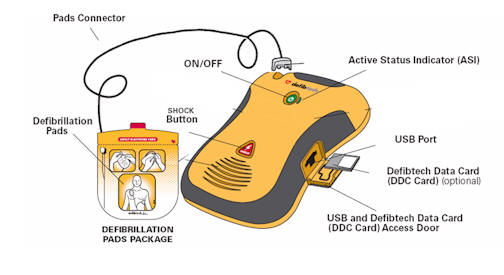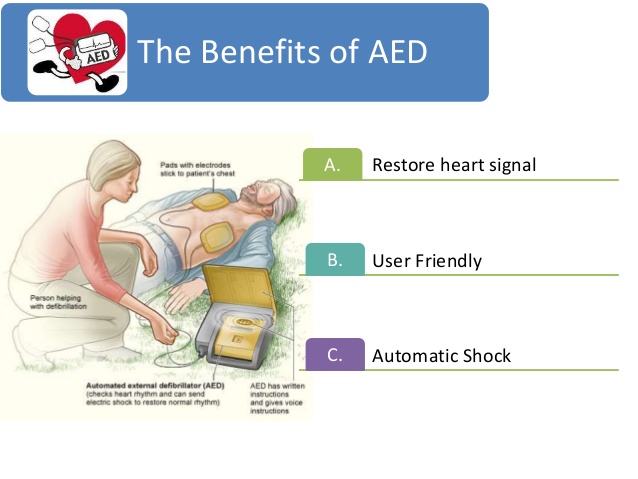What is the issue?
- In recent times the incidence of deaths due to sudden cardiac arrests outside home is increasing.
- Various Indian cities need to install Automated External Defibrillator (AEDs) in public spaces to address this issue.
What are AEDs?
- Automated External Defibrillators or AEDs are portable electronic medical devices to detect life-threatening cardiac activity such as irregular heartbeats and pulselessness.
- It can revive the heart by defibrillation or application of electricity to restore effective cardiac rhythm.

- In the absence of a trained medical professional, AED can be used by an ordinary educated person, as it is equipped by simple audio and visual commands.
What is the need for an AED?
- During a cardiac arrest, the heart stops functioning due to problems in the electrical system of the heart, disrupting the pumping action.
- As a result the blood flow to brain and other parts of the body stops, within seconds, a person drops down unconscious and has no pulse, and within minutes, a person suffers death.
- It is estimated that the failure to administer life-saving defibrillation within 4 to 6 minutes of suffering cardiac arrest is a major factor for 95 per cent of sudden cardiac deaths.
- A person suffering from cardiac arrest except for timely administering of cardiopulmonary resuscitation (CPR) and AEDs, there remains no other way to save the life.

What is the need for AEDs in public spaces?
- Emergency services in India unfortunately are known to take way more time than they should and therefore, first-aid tools have crucial role to play for saving lives.
- With a large population size and densely crowded public spaces, there are strong indicators for growing incidence of sudden cardiac events in the country.
- This makes installation of AEDs in public places important and they should be placed alongside fire-extinguishers or at similar locations.
- In large buildings, possibly every floor can have an AED, in markets, malls, and public places, they could be placed centrally and at entry and exits.
- The device may be installed at security guards rooms and surveillance centres as well.
What measures needs to be taken in this regard?
- Apart from few initiatives, India is largely unaware of the need for installing AEDs at strategic locations in public places.
- The changing health scenario is causing a rethink and up gradation of such standards worldwide, and India needs to learn from the US, the need to make this device readily available.
- Keeping the trends of public health in mind, the union and state governments need to lay guidelines for installation of AEDs.
- Government should make Installing AEDs mandatory in railway stations, airports, metro stations, and bus terminals.
- Security staff and emergency service personnel should be trained to administer first-aid services, including CPR and AEDs.
- AEDs should be installed in traffic police vehicles and patrolling cars, and such officials should be trained to operate AEDs.
Source: Business Line

